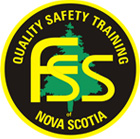Working in Extreme Cold
Hazards Identified
Heat loss from body (lowered core temperature), loss of judgement, frostbite
Hazard-Specific Personal Protective Equipment
Warm clothing, protection from wind
Hazard-Specific Training
Winter Survival Skills Training is desirable for those working in remote locations
CCOHS Link
Cold Environments – Working in the Cold
Safe Work Practice
- Note: When the body core temperature is lowered (hypothermia), loss of judgement is one of the first effects and may hinder survival planning and self rescue. Note: Consumption of alcohol will cause body heat to be lost more quickly.
- Wind will greatly increase the amount of heat lost at any given temperature (wind chill) and will increase the probability of hypothermia and frostbite. The Wind Chill Index should be consulted before undertaking any work in cold, windy conditions.
- To conserve body heat, dead air space between the body and the outside air is essential. This requires layers of clothing and a wind proof shell. Clothing must also “breathe” to allow evaporations of sweat.
- Metal will rapidly conduct heat away from the body. Do not let bare skin come in contact with metal.
- Schedule frequent breaks in a warm (not hot) area. Decrease time of duty as temperature drops.
- Monitor all personnel frequently, watching for signs of impaired judgement or frostbite.
- When travelling in cold weather, be prepared in case of being stranded, with extra clothing, blankets, candle and food.
- When stranded in a storm, stay in the vehicle and face the vehicle into the wind if possible. Run the vehicle periodically, being careful that exhaust gas (carbon monoxide) does not enter the vehicle.
- When stranded, a candle will provide heat and light, and stuffing from seats can be placed in clothing for additional insulation.
- When frostbite is observed, warm the affected area gently and slowly. Do not rub with snow.
Regulations, Standards and References
First Aid for cold and frostbite
ACGIH Threshold Limit Values for Cold Stress
